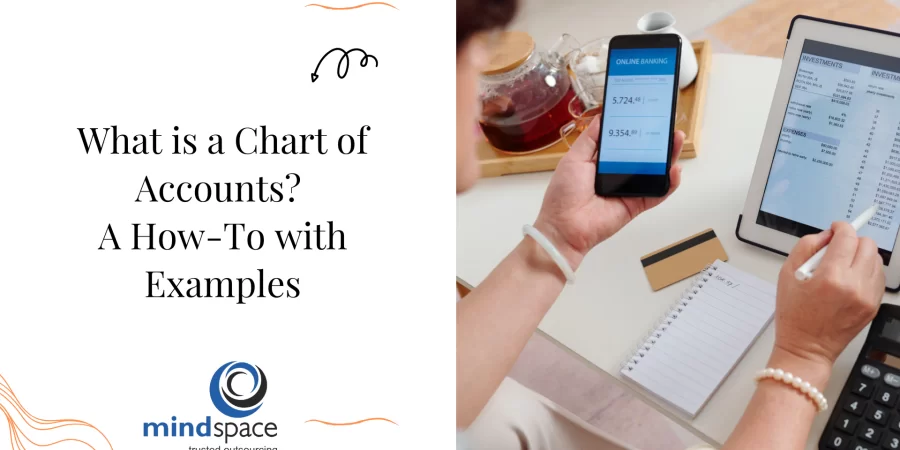What is a Chart of Accounts? A How-To with Examples
In the realm of accounting, a Chart of Accounts (COA) is an essential organizational tool that helps businesses systematically categorize their financial transactions. The COA serves as the backbone of a company’s accounting system, ensuring that financial data is accurately recorded, easily accessible, and comprehensible. Whether you’re managing a small startup or a large corporation, understanding and utilizing a Business Chart of Accounts effectively can streamline your financial operations and enhance your decision-making processes. In this comprehensive guide, we’ll delve into the definition of a Chart of Accounts, explain how to set one up, and provide practical examples to illustrate its application.
Defining a Chart of Accounts
A Chart of Accounts is a structured list of all accounts used by an organization to record financial transactions. These accounts are typically grouped into categories based on the type of transaction they represent. The main categories usually include:
- Assets: Resources owned by the business (e.g., cash, inventory, equipment).
- Liabilities: Obligations owed by the business (e.g., loans, accounts payable).
- Equity: Owner’s interest in the business (e.g., common stock, retained earnings).
- Revenue: Income earned from business activities (e.g., sales revenue, service income).
- Expenses: Costs incurred in the course of business operations (e.g., rent, utilities, salaries).
Each account within these categories is assigned a unique number to facilitate easy identification and reference in the accounting system.
How to Set Up a Chart of Accounts
Creating a common Chart of Accounts involves several key steps. Here’s a step-by-step guide to help you establish a robust COA for your business:
1. Define Account Categories
Begin by outlining the primary categories of accounts that align with your business operations. These typically include assets, liabilities, equity, revenue, and expenses. Depending on the complexity of your business, you may also need subcategories within these main groups to provide more detailed tracking.
2. Assign Account Numbers
Assigning numbers to each account helps maintain order and simplifies data entry and retrieval. A common numbering system is to use a sequence where each major category has a specific range:
- Assets: 1000-1999
- Liabilities: 2000-2999
- Equity: 3000-3999
- Revenue: 4000-4999
- Expenses: 5000-5999
3. Create Account Descriptions
For each account, provide a clear and concise description. This ensures that anyone using the COA understands the purpose of each account and can categorize transactions accurately.
4. Customize for Your Business
Tailor the COA to reflect the unique aspects of your business. For example, a retail business might have specific accounts for inventory purchases and sales, while a service-based business might need accounts for different types of service revenue.
5. Review and Refine
Periodically review your COA to ensure it continues to meet the needs of your business. As your company grows and evolves, you may need to add new accounts or revise existing ones to accommodate new types of transactions.
Examples of Chart of Accounts
To illustrate how a retail chart of accounts might look in practice, let’s consider examples for both a small retail business and a service-based company.
Example 1: Retail Business
Assets:
- 1000: Cash
- 1010: Accounts Receivable
- 1020: Inventory
- 1030: Prepaid Expenses
- 1040: Equipment
Liabilities:
- 2000: Accounts Payable
- 2010: Short-Term Loans
- 2020: Long-Term Debt
Equity:
- 3000: Owner’s Equity
- 3010: Retained Earnings
Revenue:
- 4000: Sales Revenue
- 4010: Returns and Allowances
Expenses:
- 5000: Cost of Goods Sold
- 5010: Rent Expense
- 5020: Utilities Expense
- 5030: Salaries and Wages
- 5040: Advertising Expense
Example 2: Service-Based Business
Assets:
- 1000: Cash
- 1010: Accounts Receivable
- 1020: Office Supplies
- 1030: Prepaid Insurance
Liabilities:
- 2000: Accounts Payable
- 2010: Salaries Payable
- 2020: Unearned Revenue
Equity:
- 3000: Owner’s Equity
- 3010: Retained Earnings
Revenue:
- 4000: Service Revenue
- 4010: Consulting Fees
Expenses:
- 5000: Rent Expense
- 5010: Utilities Expense
- 5020: Salaries and Wages
- 5030: Office Supplies Expense
- 5040: Travel Expense
Benefits of Using a Chart of Accounts
Implementing a well-organized Chart of Accounts offers several advantages:
Improved Financial Reporting
A COA provides a clear and organized framework for recording financial transactions, making it easier to generate accurate financial statements. This enhances the reliability of your financial reporting and aids in compliance with accounting standards and regulations.
Enhanced Decision-Making
By categorizing and tracking financial data systematically, a COA enables you to analyze your business’s financial performance more effectively. This, in turn, supports informed decision-making and strategic planning.
Simplified Audit Process
A detailed and well-maintained COA simplifies the auditing process. Auditors can easily trace transactions and verify account balances, reducing the time and effort required for audits and reviews.
Better Budgeting and Forecasting
With a comprehensive COA, you can track income and expenses accurately, facilitating better budgeting and forecasting. This allows you to manage cash flow more efficiently and plan for future growth.
Conclusion
A Chart of Accounts is a fundamental tool for any business seeking to maintain accurate and organized financial records. By defining account categories, assigning account numbers, and customizing the COA to suit your business’s needs, you can create a robust accounting framework that supports effective financial management. Whether you’re running a retail business or providing services, understanding and utilizing a Chart of Accounts can enhance your financial reporting, improve decision-making, and simplify audits and budgeting processes. By mastering this essential aspect of accounting, you lay the foundation for your business’s long-term success and stability.


